Imagine a predator so powerful it could take down prey with a single, bone-crushing bite—yet so swift it moved like a shadow through ancient grasslands. Meet Xenosmilus, the “strange knife cat,” a marvel of feline evolution that rewrote the rules of what it meant to be a big cat. Its story is one of muscle, mystery, and the breathtaking dance between hunter and hunted—a tale that still stirs the imagination of those who love the wild.
A Name That Hints at Mystery
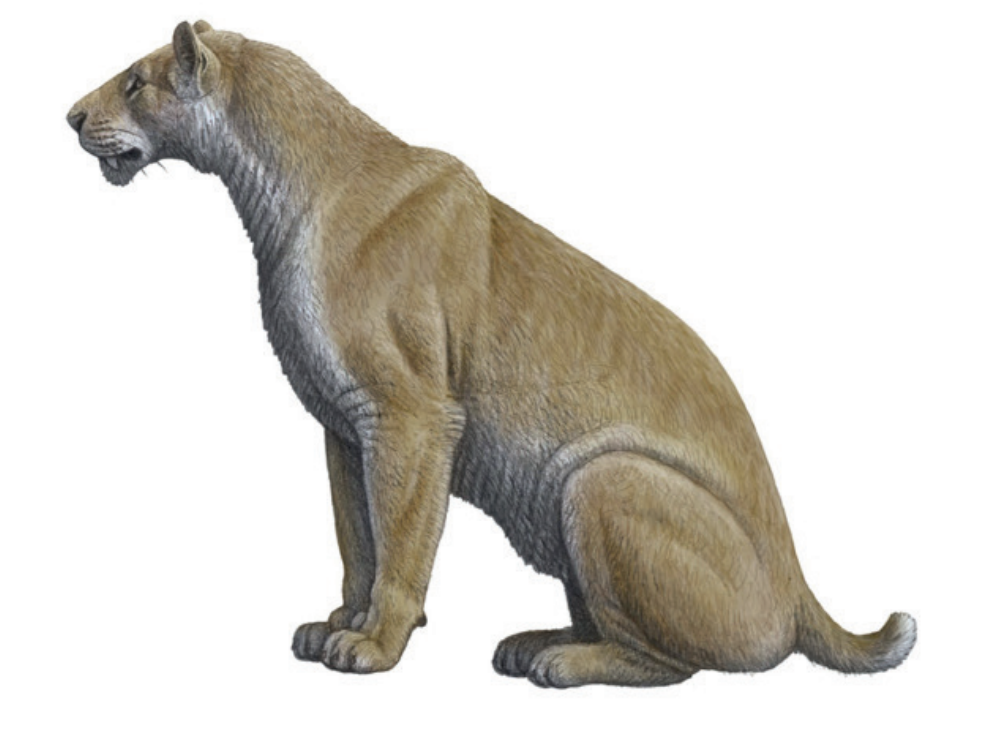
Xenosmilus, meaning “strange knife,” was every bit as formidable as its name suggests. Unlike the slender, dagger-like fangs of typical saber-toothed cats, its teeth were shorter, broader, and serrated—more like a row of prehistoric steak knives than scalpels. This unique dental arsenal allowed Xenosmilus to rip through muscle and hide with brutal efficiency, delivering wounds no prey could survive for long. It didn’t just kill—it carved. In the world of Ice Age predators, Xenosmilus was the butcher, not the surgeon.
The Powerhouse Build

Xenosmilus broke the mold of the sleek, agile big cat—it was a powerhouse, with a body more reminiscent of a bear than a lion. Its stocky build, dense muscles, and barrel-like chest gave it incredible strength and stability. Every movement, from a low stalk to a thunderous pounce, was fueled by sheer physical force. It didn’t rely on speed alone but on the ability to overwhelm its prey with a crushing, explosive assault. In a world of predators, Xenosmilus was a battering ram in fur.
Speed that Surprised Prey

Despite its hulking frame, Xenosmilus was no lumbering brute. Beneath its dense muscle was a predator built for sudden, explosive action—its limbs powered by spring-like muscles capable of launching it into rapid motion in an instant. This lethal burst of speed gave it a crucial edge in the ambush game, allowing it to strike before prey had time to react. One moment, still and silent; the next, a blur of muscle and teeth. For its victims, escape was rarely an option—Xenosmilus struck fast, and finished faster.
Teeth Like Saws
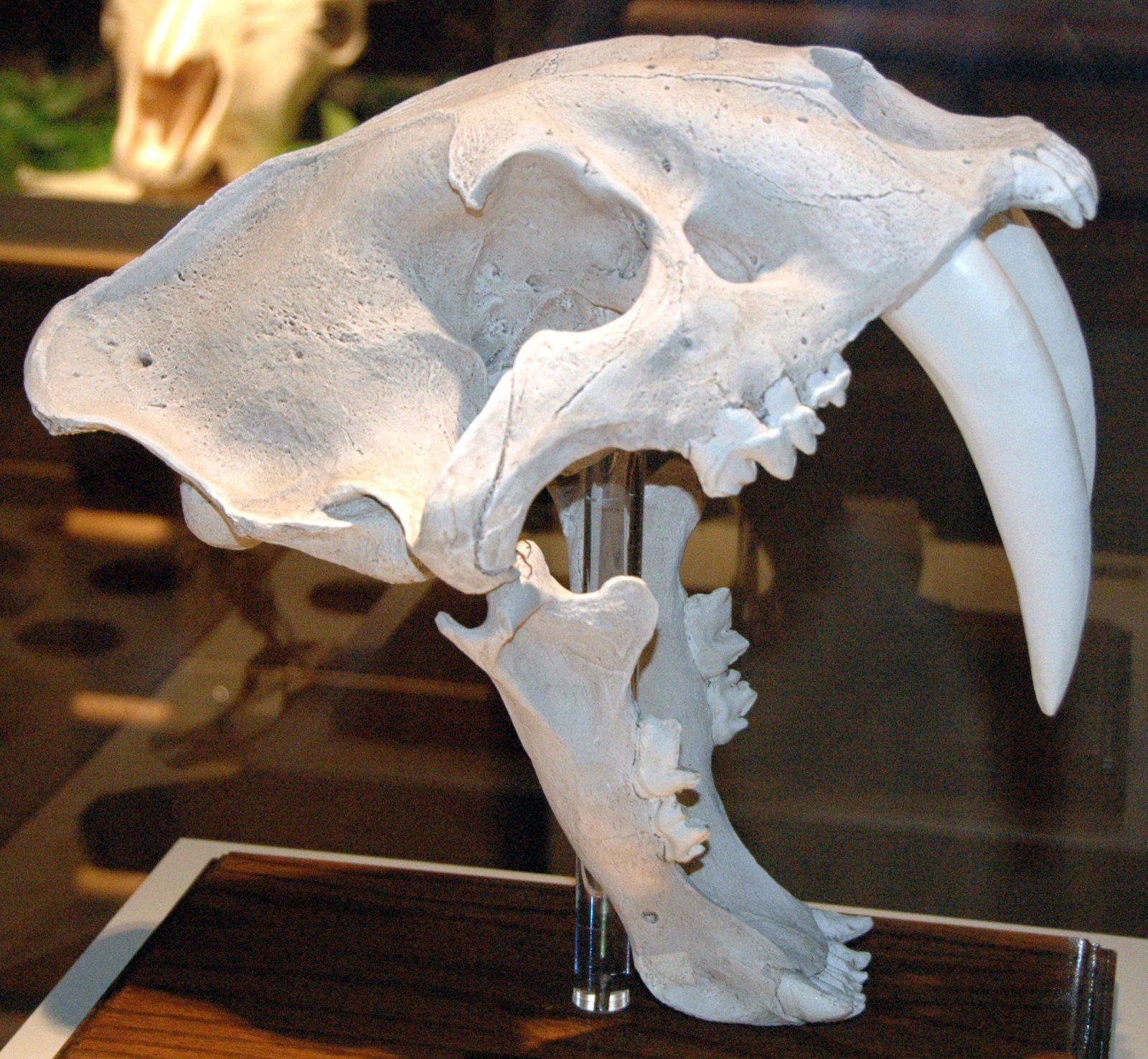
Unlike the elongated fangs of its saber-toothed cousins, Xenosmilus wielded a fearsome set of short, serrated teeth—designed not for finesse, but for devastation. These robust fangs worked like natural saws, tearing through flesh, sinew, and even bone with chilling efficiency. Every bite was not just an attack, but a finishing move, leaving prey with little chance of escape or survival. This brutal dental toolkit set Xenosmilus apart from any other cat in the fossil record. It wasn’t built to slash—it was built to shred.
Ancient Hunting Grounds
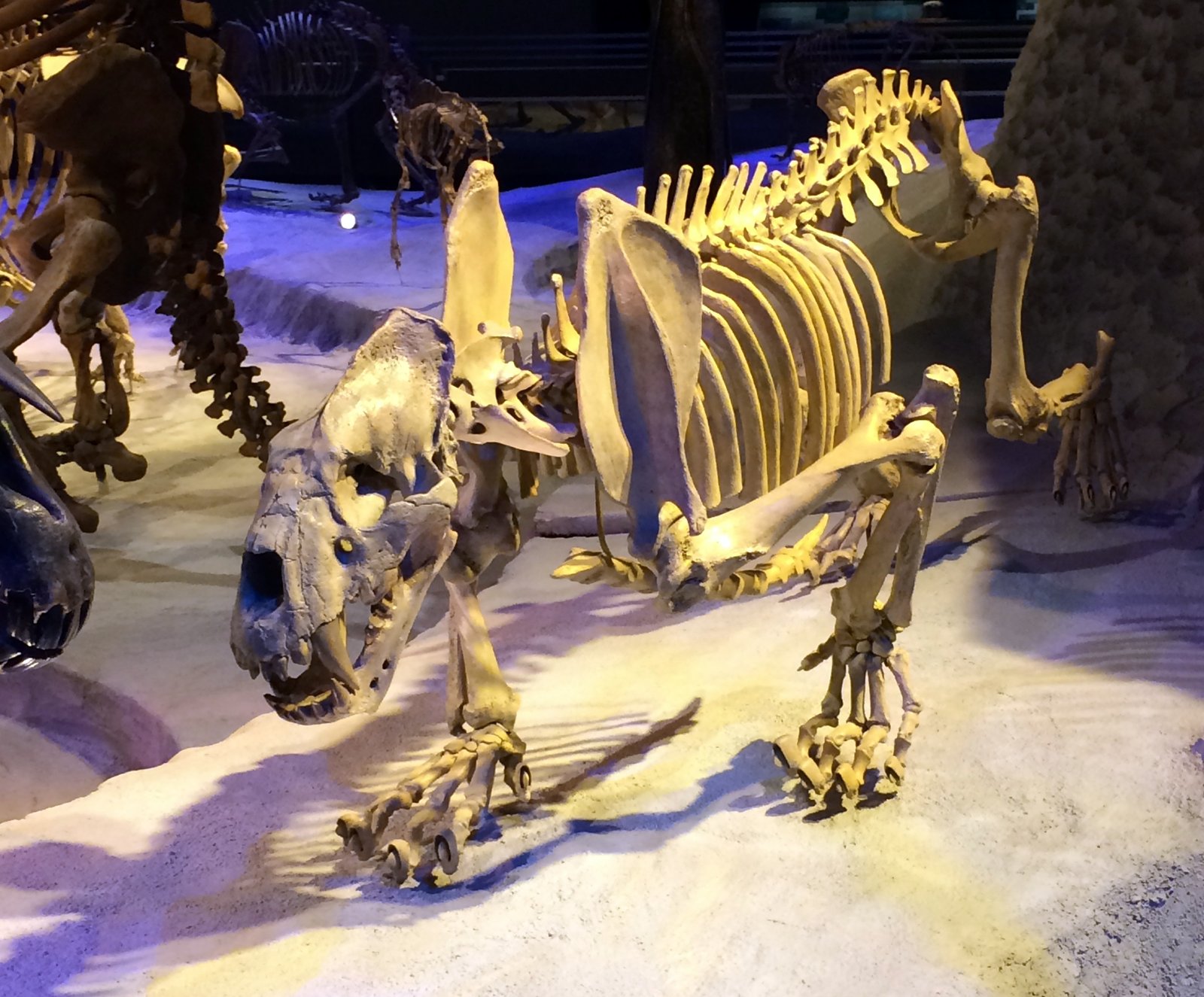
Fossil evidence places Xenosmilus in ancient Florida roughly two million years ago, prowling a landscape vastly different from today’s subtropical swamps. Back then, open woodlands blended with grassy plains, creating a rich, diverse ecosystem teeming with giant herbivores like peccaries and camels. It was a land of opportunity—but also of fierce competition and lurking threats. In this dynamic environment, Xenosmilus thrived as a top-tier predator, perfectly adapted to ambush prey in the shifting light and shadows of a wild, untamed world.
Prey of Giants

Xenosmilus was a predator that didn’t waste time on drawn-out chases—it specialized in bold, high-impact ambushes. Targeting hefty herbivores like prehistoric peccaries and camels, it used sheer strength and explosive speed to overwhelm its prey in seconds. Once in range, its powerful limbs and bone-slicing teeth turned the hunt into a brutal, close-quarters assault. This cat punched far above its weight, bringing down animals much larger than itself with a blend of muscle, timing, and terrifying efficiency. It was the embodiment of force meeting precision in the prehistoric wild.
A Social Predator?

Some paleontologists speculate that Xenosmilus may not have hunted alone, but in coordinated pairs or small groups—a rarity among big cats. This theory, based on fossil sites where multiple individuals were found near shared prey, suggests a surprising level of social behavior. Working together, these muscular ambush predators could have taken down larger, more dangerous targets with greater success. While the evidence isn’t conclusive, the possibility adds a compelling twist to their story—turning Xenosmilus from a solitary killer into a master of teamwork and tactical hunting.
The Bite of Legends
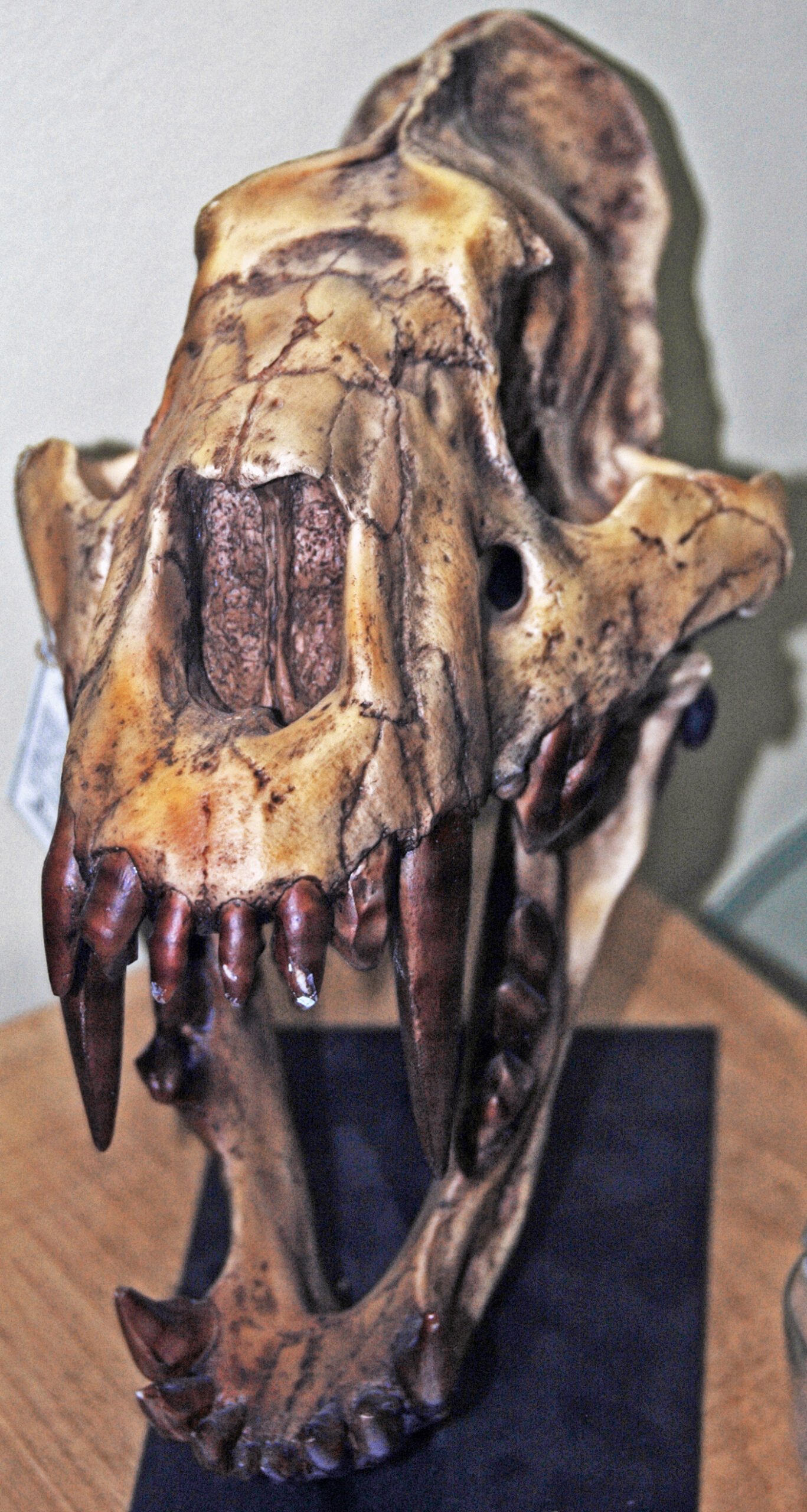
Xenosmilus’s bite packed enough power to shatter bone and rip through tough hide without hesitation. Its jaws functioned like a crushing clamp, delivering immense pressure in a heartbeat. Each serrated tooth worked like a miniature knife, slicing cleanly and efficiently through flesh. The fossilized remains of its prey still bear these violent trademarks—deep cuts and splintered bones that reveal a predator built for devastation. Every mark is a chilling reminder of its unmatched killing precision.
Short Limbs, Big Leaps

Xenosmilus’s shorter legs weren’t built for long chases—they were built for bursts of raw, explosive power. Thick with muscle, these limbs acted like coiled springs, allowing the cat to launch itself with surprising speed and force. Whether exploding from dense brush or vaulting onto a panicked animal, its leaps were swift and devastating. This ambush strategy turned its stocky frame into a weapon, hitting prey before they had time to react. In the world of predators, Xenosmilus was less a sprinter—and more a living, leaping trap.
Unique Skull Structure

The skull of Xenosmilus was a fortress of bone—thicker, broader, and more heavily built than that of any living big cat. This reinforced structure didn’t just house a powerful brain; it served as armor during brutal confrontations with large, thrashing prey. Its wide cranium offered extra surface area for jaw muscle attachment, enabling an even more fearsome bite. Every ridge and contour of the skull speaks of strength and resilience, built to endure the violent shock of the hunt. In Xenosmilus, nature engineered both weapon and shield in a single, deadly design.
Camouflage in the Wild

Scientists suspect that Xenosmilus likely wore a dappled or striped coat—patterns perfect for vanishing into the broken light of forested landscapes. In the shifting shadows of ancient woodlands, such camouflage would have been a silent ally, allowing the predator to get dangerously close before launching its attack. These markings weren’t just for show—they were survival tools, turning the cat into a ghost among trees and brush. With stealth on its side, Xenosmilus became nearly invisible until it was far too late.
Silent Stalker

Like modern big cats, Xenosmilus likely moved with ghost-like precision—its power cloaked in silence. Every step was deliberate, its padded feet muffling even the slightest sound as it stalked through grass and brush. This predator didn’t need to rush; it relied on patience, reading the rhythms of its prey before striking. In many ways, its silence was as lethal as its bite—by the time you heard Xenosmilus, it was already too late.
Relatives and Lineage
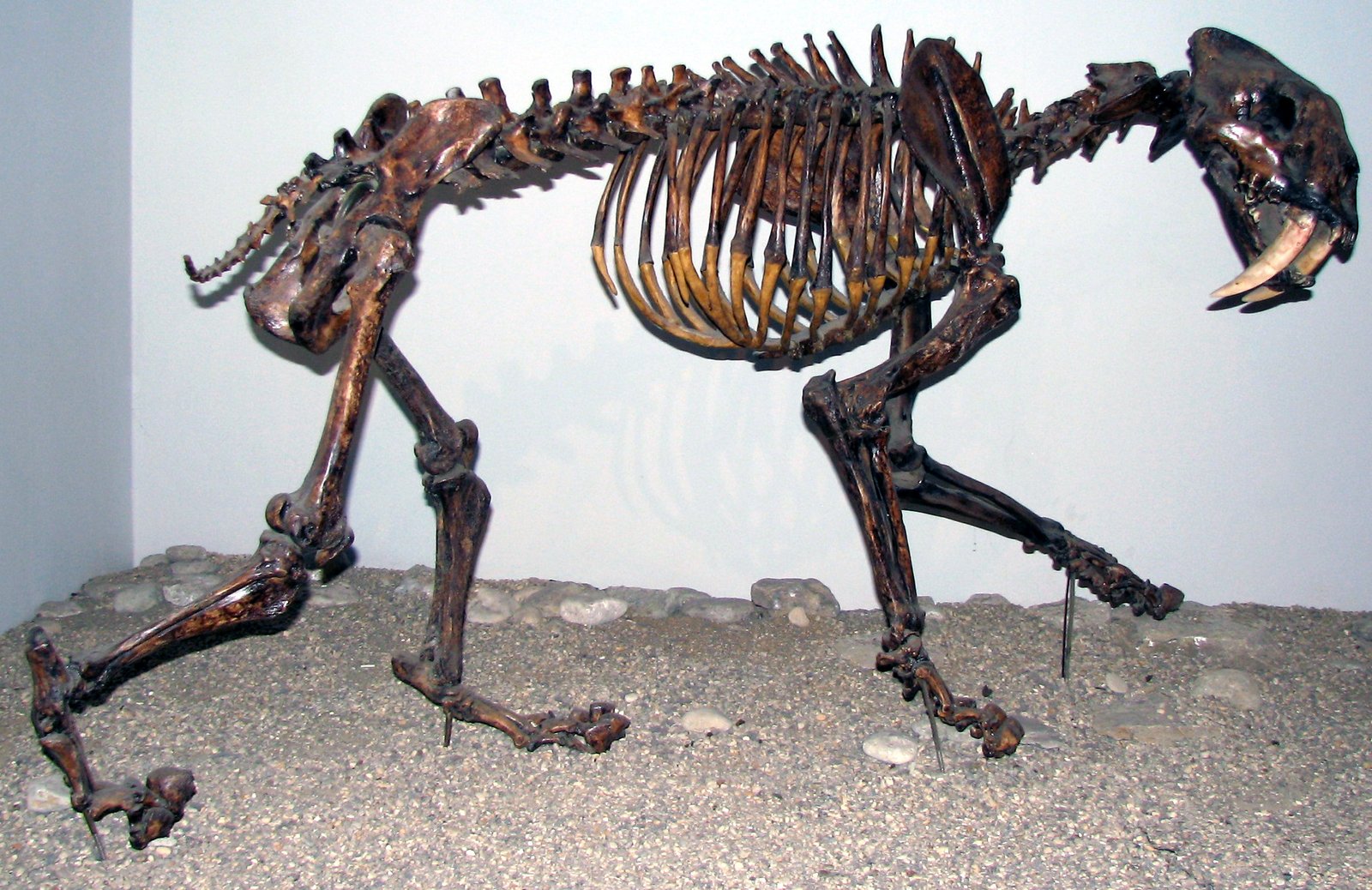
Xenosmilus was part of a now-extinct lineage that shared traits with both saber-toothed cats and modern big cats, yet followed its own remarkable evolutionary path. Its robust build, serrated teeth, and hunting style defy simple classification, blurring the lines between familiar feline forms. This strange mix of characteristics makes Xenosmilus a standout in the fossil record—a hybrid of power and precision unlike any other. It’s a vivid reminder that evolution doesn’t always follow straight lines; sometimes, it invents something entirely new.
Emotional Intelligence

While much remains speculative, some evidence hints that Xenosmilus may have formed tight-knit social bonds, particularly if it hunted cooperatively. Working as a team to ambush and take down large prey would have required coordination—and likely trust—among individuals. Sharing the spoils of a successful kill could have reinforced these bonds, strengthening group cohesion over time. If true, this would place Xenosmilus among the rare social predators of its era, adding a surprising layer of complexity to its fierce reputation.
Habitat Loss and Extinction

Shifting climates and the gradual disappearance of large prey likely sealed the fate of Xenosmilus. As ancient ecosystems transformed—grasslands expanding, forests thinning—the specialized habitats and hunting grounds it depended on began to vanish. Without sufficient cover or adequate food sources, this formidable predator found itself increasingly outmatched by a changing world. Its extinction is a stark reminder that strength alone doesn’t guarantee survival—adaptability is just as crucial. Even apex predators can fall when the balance of nature tips.
Lessons in Adaptation
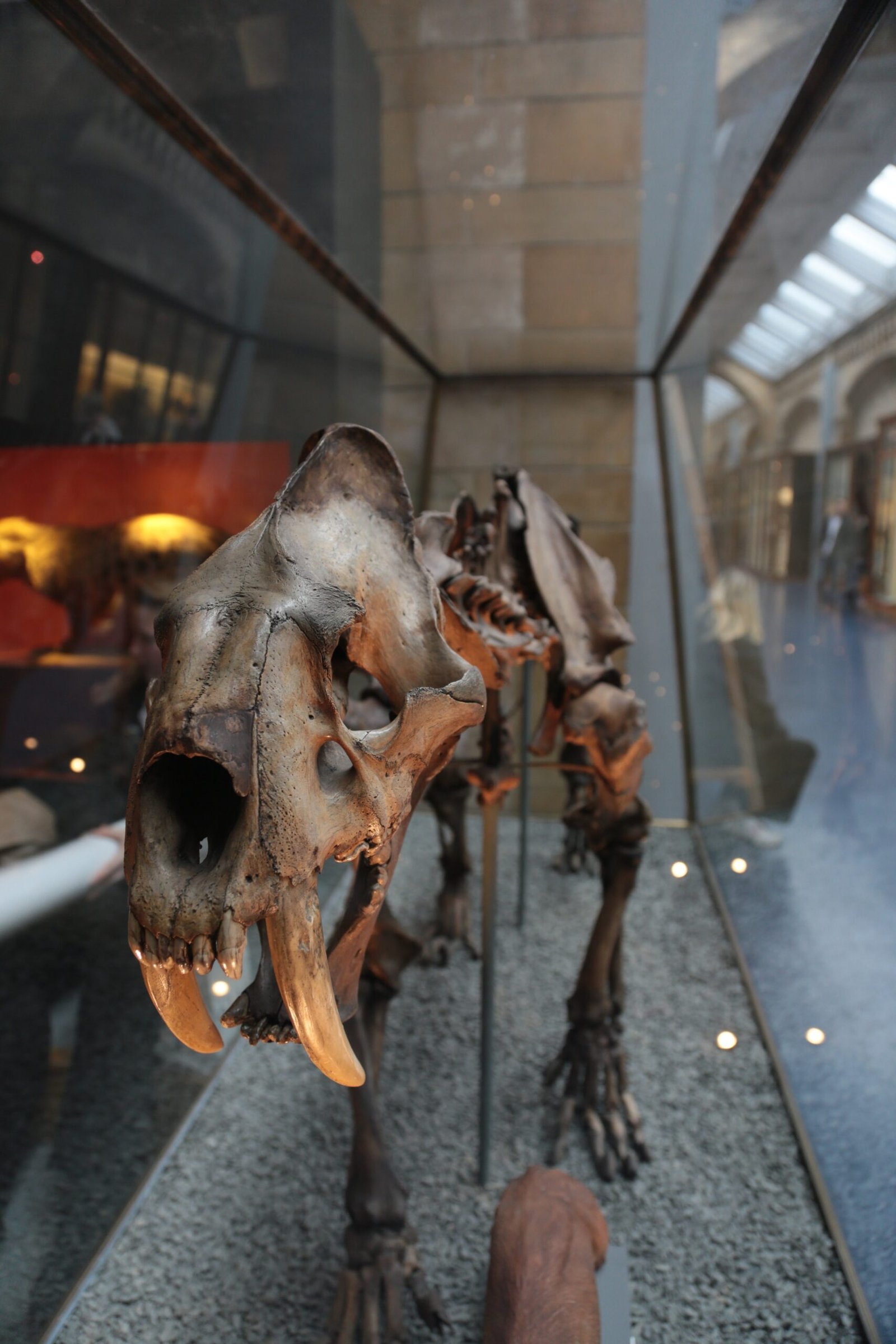
Xenosmilus’s incredible design—muscular, fast, and lethally efficient—made it a master of ambush in its prime. But that same specialization became a vulnerability as ecosystems shifted and prey species declined. Built for a very specific style of hunting and habitat, it lacked the flexibility to adapt quickly to a changing world. In nature, being the best at one thing can be dangerous when the rules of survival change. For Xenosmilus, evolutionary brilliance came with a built-in expiration date.
Inspiring Awe and Wonder

There’s something profoundly humbling about picturing Xenosmilus weaving silently through the twilight of ancient forests—muscle, instinct, and silence in perfect harmony. Its story reaches across time, reminding us that Earth was once home to creatures as strange as they were magnificent. Each fossil is a whisper from that lost world, urging us to look closer, to ask more, and to never lose our sense of awe. In uncovering Xenosmilus, we don’t just learn about the past—we reconnect with the wildness still pulsing beneath the surface of our world.
Modern Connections

Though long vanished, Xenosmilus’s legacy echoes in every stalking leopard, every pouncing tiger, every watchful lion. Its fierce design and cunning spirit are etched into the DNA of modern big cats—a testament to the deep evolutionary roots they all share. But its story also carries a warning: even the mightiest predators are not immune to change. In honoring Xenosmilus, we’re reminded to protect the wild creatures still among us, before they too become stories written only in stone.

Suhail Ahmed is a passionate digital professional and nature enthusiast with over 8 years of experience in content strategy, SEO, web development, and digital operations. Alongside his freelance journey, Suhail actively contributes to nature and wildlife platforms like Feline Fam, where he channels his curiosity for the Feline into engaging, educational storytelling.
With a strong background in managing digital ecosystems — from ecommerce stores and WordPress websites to social media and automation — Suhail merges technical precision with creative insight. His content reflects a rare balance: SEO-friendly yet deeply human, data-informed yet emotionally resonant.
Driven by a love for discovery and storytelling, Suhail believes in using digital platforms to amplify causes that matter — especially those protecting Earth’s biodiversity and inspiring sustainable living. Whether he’s managing online projects or crafting wildlife content, his goal remains the same: to inform, inspire, and leave a positive digital footprint.






